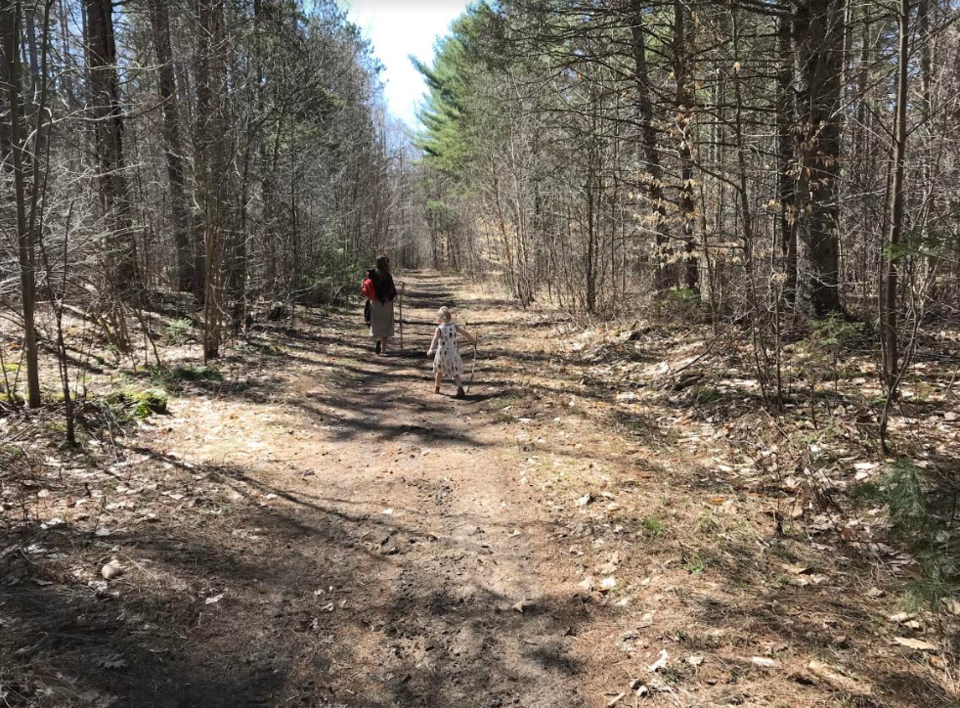An Oro-Medonte councillor’s concerns about developers clear-cutting trees has led the township to implement a municipal tree-canopy conservation bylaw, designed to work in tandem with the County of Simcoe’s existing tree preservation bylaw.
At the Jan. 10 meeting of council, Coun. Lori Hutcheson introduced a notice of motion to have the township’s planning department bring forward a report on a tree-cutting bylaw within the municipality.
Hutcheson said she was disappointed with the township’s current policy, feeling it lacked the control the municipality needed. She said some developers were basically ignoring the township’s and the county’s rules.
“Specifically, I was looking for how do we move forward with plans of subdivisions on very sensitive land, such as the moraine,” she said at last week’s council meeting when the staff report on the issue was presented.
“We’re only going to have more development coming in, so I thought it was appropriate to have those conversations,” Hutcheson added.
Hutcheson said her intent is not to limit what homeowners and farmers do — “they have the ability to manage their own trees” — but to ensure developers follow the rules.
Brent Spagnol, Oro-Medonte's director of development services, presented four options to township council last week.
“The scope of bylaw could have direct impact on a number of things,” Spagnol said as he presented his report. “A far-reaching bylaw, covering a large scope, could have an implication on (the) need for additional staff resources, a tax implication and possible impacts on service delivery.”
Option 1 called for maintaining the county’s existing tree-conservation bylaw, administered by the county.
Option 2 required staff to prepare a settlement area/rural settlements specific tree-canopy conservation bylaw to be applied to the entirety of settlement areas, such as vacant land, residential, commercial, industrial etc.
Option 3 required staff to prepare a tree-canopy conservation bylaw to be applied to consider provisions and regulations for tree removal on a settlement area/rural settlement basis that establish parameters for tree removal for vacant future development land. The county’s tree-preservation bylaw would be applied outside of settlement areas/rural settlements.
Option 4 looked for staff to prepare a tree-canopy conservation bylaw to be applied to the entire municipality in place of the county's existing bylaw.
Township council voted in favour of Option 3.
“It’s kind of like Option 2 in the sense that it’s settlement areas specific,” Spagnol said. “But what it would attempt to do is focus on making development lands within settlement areas to ensure that, prior to planning application approvals, that there is not any clear-cutting that occurs without having municipal involvement or a permitting process for consideration of those properties.
“The reason why I point to the vacant development land is that currently in the township’s Official Plan, currently in the county’s Official Plan, there are parameters within those policies that provide planning staff the ability to require tree inventories, to require tree preservation plans, and to try to aim, and to aim to enhance and maintain, as much tree canopy and tree cover as possible through the development process,” he added.
Spagnol identified the gap in the process.
“Prior to planning approval, there needs to be something so that the municipality can be involved within those areas where development may occur and clear-cutting may be a result of development interests within settlement areas,” he said.
According to Spagnol’s report, there are four justifications for Option 3.
- Local bylaw focus on the preservation of trees
- Focused on specific land (eg: size, designation, zone etc.)
- Ability to establish a local framework (tree inventory, tree clearing agreements etc.)
- Ability to enforce, litigate or establish fines for unlawful tree removal prior to a Planning Act application/approval.
At the same time, he identified three challenges with implementation:
- Potential confusion related to the applicability/overlap of the county tree-conservation bylaw
- Township staff resources needed to regulate, enforce, litigate unlawful tree removal. Expert arborists and ecologists are not currently available within the township’s complement
- Tax implication to fund required staff.
Coun. Robert Young supported Option 3 and recommended the bylaw include hefty fines to ensure compliance.
“The fines have to be substantial,” Young said, “otherwise the developers just deems it the cost of doing business and that cost is just added to the price of the homes. “The fines that other municipalities have are substantial and they have to be to be a deterrent or at least make think twice about clear-cutting areas.”



